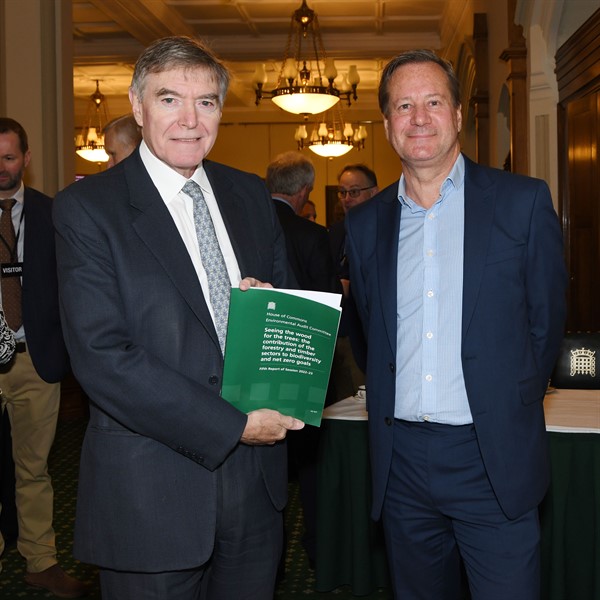Wood Strategy can shape productive timber future
15 November 2023
The latest meeting of the All-Party Parliamentary Group (APPG) on Forestry and Tree Planting has heard how the upcoming National Wood Strategy for England can deliver practical actions to put timber production at the heart of future forestry policy-making - and build on the Environmental Audit Committee (EAC) report, which called for greater domestic timber production.
The Strategy, which will be formally launched at Confor’s policy conference on 7 December, calls for clarity on which trees we need to plant where to secure future timber supply, sequester more carbon and create more jobs, especially in rural areas.
Tom Barnes, co-author of the Strategy, said it flowed naturally from July’s EAC report and Ben Lake, APPG Chair, will write to new Environment Secretary Steve Barclay MP, asking when the UK Government will respond to the EAC report, as its reply is two months’ late.
Philip Dunne, EAC Chair, told the APPG meeting at Westminster why the inquiry that led to the report (Seeing The Wood for The Trees) was carried out: “We were concerned that the Government had made a number of commitments and pledges to increase tree planting which were not being met.”

A major driver of the report was the need for more timber for construction in future and the need to grow more as global demand for wood soared [The World Bank estimates it could quadruple by 2050].
UK demand is also expected to rise, partly because of the Government’s commitment to promote timber use in construction as part of its Net Zero Strategy. Yet the UK imported 81% of all its timber in 2021, and without urgent action its home-grown timber supply is set to fall even further behind demand.
Mr Dunne said predominantly broadleaf planting was not enough and suggested specific targets for additional planting of wood producing forests that are primarily softwood. Tom Barnes picked up on this later as he called for greater clarity and a higher profile for timber production.
“My job is to build on the EAC report and look at the actions and steps forward,” he said. “The focus is on how we grow and use wood, which hasn’t had a lot of attention in recent decades.”
He said the context of the report was the UK’s aim to have 16.5% of woodland cover by 2050 (Anna Brown of Forestry Commission later stressed the target was “at least 16.5%") and the increasing global shortage of wood fibre.
